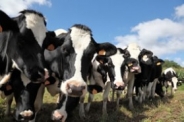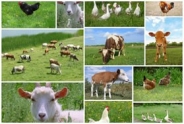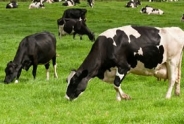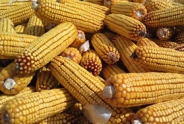Forages
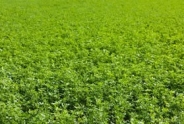 In western New York high yields of high quality forage are vital to the dairy and livestock industries. Feed-costs are often half of a farm's business expenses each year. This page contains resources and information to help farmers better manage silage, hay, and pastures.
In western New York high yields of high quality forage are vital to the dairy and livestock industries. Feed-costs are often half of a farm's business expenses each year. This page contains resources and information to help farmers better manage silage, hay, and pastures. Farm Financial Management Practices for Unfavorable Economic Conditions
Sound financial planning and control improve owner's abilities to manage their businesses during unfavorable economic conditions. Consider the current environment affected by the COVID-19 pandemic, and the lack of rain in many areas. Budgeting is a valuable farm financial management practice for these situations. Visit (Brandie, please insert link here) to learn more about budgeting and its value in managing your farm business.
Reducing the Risk of Compaction When Grazing Cover Crops
Nancy Glazier, Small Farms & Livestock Specialist
Northwest New York Dairy, Livestock & Field Crops

The benefits of cover crops have been known for many
years; one is remediating compaction.
Dairy Culture Coach September 2019
Libby Eiholzer, Bilingual Dairy
Northwest New York Dairy, Livestock & Field Crops
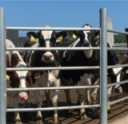
The latest issue of the Dairy Culture Coach includes the following topics:
- Improving Human Resource Management
- Silage Harvest Vocabulary
- The Importance of Corn
- La Importancia del Maíz
- Consulate Updates
Please feel free to contact Libby with questions, to subscribe to the newsletter, or to make suggestions for future content. geg24@cornell.edu or 607-793-4847.
Dairy Alert 9.24.19
Libby Eiholzer, Bilingual Dairy
Northwest New York Dairy, Livestock & Field Crops
Welcome to the new Dairy Alert!
While many of you receive our monthly newsletter, Ag Focus, we wanted a way to stay in touch during those in-between weeks when there is important news to share. In this issue:
Corn Silage Pre-Harvest Meetings
Pricing Corn Silage
Sexual Harassment Prevention: Comply by 10/9
Pricing Corn Silage -- Fall 2019
John Hanchar, Farm Business Management Specialist
Northwest New York Dairy, Livestock & Field Crops
- Analysis suggests corn silage price depends on corn silage quantities, alfalfa hay price, the price received by farmers for milk, and corn grain price.
- Analysis for NY suggests that estimated corn silage price is most sensitive to corn silage quantities, alfalfa hay price and corn grain price.
- Price estimates combined with understanding of relevant supply and demand factors from an individual farm business owner's perspective can aid decision making regarding corn silage price. Given recently available alfalfa hay and corn grain prices (May through July, 2019, and August 27, 2019, respectively), price analysis for NY suggests an estimated corn silage price of about $45 per ton. The Fall 2018 estimate was about $41 per ton.
Webinar for Dairy Producers will Cover New Dairy Margin Coverage Program
John Hanchar, Farm Business Management Specialist
Northwest New York Dairy, Livestock & Field Crops
The USDA/Farm Service Agency in New York is partnering with the NYS Crop Insurance Education Program to present a webinar for dairy producers.
Alfalfa Height Measurement updated weekely

Locations around the region are listed where we have measured alfalfa height (see spreadsheet). You can use the location and elevation as a guide to conditions that may be similar to your farm.
The 2019 hay crop season is shaping up to be similar to our 2018 harvest schedule. An alfalfa height of 9 inches or less is too low to be used by the equation we have which is why you see "Too Early." On May 2, 2018 the alfalfa averaged 7 inches tall and as of today, May 2, 2019, alfalfa is averaging 7 inches tall.
The table below indicates no grasses are ready to be cut today. The continued temperature fluctuations along with rain will influence how much growth we get in another week so stay tuned! Soil temperatures are ranging between 38 and 46 degrees in places.
It is important that you get first cutting off in a timely manner for quality purposes, so please communicate in advance with your team on how you are going to plant corn and successfully harvest 1st cutting. Additional fields to be added to next report.
Week 2, Updated May 9, 2019:
| County | Town | Road Name | Elevation | Alfalfa Height Inches | Predicted Grass % NDF | Predicted 50/50 Mix % NDF | Predicted Alfalfa % NDF | Predicted Date to Cut Grass | Predicted Date to Cut Mix | Predicted Date to Cut Alfalfa |
| Monroe | Scottsville | Cameron RD | 620 | 11 | 46.5 | 33.7 | 26.2 | 5/5/19 | 5/14/19 | 5/25/19 |
| Wyoming | Castile | Glen Iris RD | 1340 | 11 | 46.5 | 33.7 | 26.2 | 5/5/19 | 5/14/19 | 5/25/19 |
| Livingston | Geneseo | Lakeville-Groveland RD | 850 | 12 | 47.4 | 34.5 | 26.9 | 5/4/19 | 5/13/19 | 5/24/19 |
| Orleans | Medina | Seaman Rd | 525 | 7 | Too Early | Too Early | Too Early | Too Early | Too Early | Too Early |
| Orleans | Lyndonville | County line rd | 322 | 10 | 45.6 | 32.8 | 25.5 | 5/6/19 | 5/16/19 | 5/27/19 |
| Ontario | Hopewell | County rd 4 | 860 | 13 | 48.2 | 35.4 | 27.6 | 5/3/19 | 5/12/19 | 5/22/19 |
| Yates | Penn Yan | Field Lane 364 | 1000 | 12 | 47.4 | 34.5 | 26.9 | 5/4/19 | 5/13/19 | 5/24/19 |
Week 1, May 2, 2019
| County | Town | Road Name | Elevation | Alfalfa Height Inches | Predicted Grass % NDF | Predicted 50/50 Mix % NDF | Predicted Alfalfa % NDF | Predicted Date to Cut Grass | Predicted Date to Cut Mix | Predicted Date to Cut Alfalfa |
| Monroe | Scottsville | Wheatland Center RD | 620 | 7 | Too Early | Too Early | Too Early | Too Early | Too Early | Too Early |
| Wyoming | Castile | Glen Iris RD | 1340 | 7 | Too Early | Too Early | Too Early | Too Early | Too Early | Too Early |
| Livingston | Geneseo | Groveland RD | 850 | 7 | Too Early | Too Early | Too Early | Too Early | Too Early | Too Early |
| Livingston | Geneseo | Chandler RD | 870 | 7 | Too Early | Too Early | Too Early | Too Early | Too Early | Too Early |
| Ontario | Hopewell | Spangle Rd | 860 | 7 | Too Early | Too Early | Too Early | Too Early | Too Early | Too Early |
| Ontario | Hopewell | Spangle Rd | 740 | 7 | Too Early | Too Early | Too Early | Too Early | Too Early | Too Early |
| Seneca | Waterloo | Yellow Tavern Rd | 590 | 8 | Too Early | Too Early | Too Early | Too Early | Too Early | Too Early |
Winter Feeding Beef Cows
Nancy Glazier, Small Farms & Livestock Specialist
Northwest New York Dairy, Livestock & Field Crops
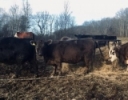
Winter is a challenging time to feed the beef herd. Mud, cold and snow or rain can stress your cows and increase their nutritional needs. How do you know if you are meeting the needs of your herd?
Financial Balancing Act Means Managing Risk is Essential
Joan Sinclair Petzen, Farm Business Management
Northwest New York Dairy, Livestock & Field Crops
The present long-term downturn in commodity prices brings with it increased financial pressure on farm operations. Alternatives for managing risk are continually evolving. For many in agriculture, and particularly dairy, self-insurance has been the go-to method of risk management. Two new tools, the USDA Market Facilitation Program (MFP) and Dairy Revenue Protection Insurance (DRP) are coming on line and a third, Rainfall Index - Pasture, Rangeland, and Forage (RI-PRF) merits serious consideration.
Pricing Corn Silage -- Fall 2018
John Hanchar, Farm Business Management Specialist
Northwest New York Dairy, Livestock & Field Crops

Summary
- Analysis suggests corn silage price depends on corn silage quantities, alfalfa hay price, the price received by farmers for milk, and corn grain price.
- Analysis for NY suggests that estimated corn silage price is most sensitive to corn silage quantities, alfalfa hay price and corn grain price.
- Price estimates combined with understanding of relevant supply and demand factors from an individual farm business owner's perspective can aid decision making regarding corn silage price. Given recently available alfalfa hay and corn grain prices (May through July, 2018, and August 14, 2018, respectively), price analysis for NY suggests an estimated corn silage price of about $41 per ton. The Fall 2017 estimate was about $54 per ton.
Crop Alert
Mike Stanyard, Field Crops & IPM Specialist
Northwest New York Dairy, Livestock & Field Crops

Timely observations, information, and control strategies for managing pests, fertility, and current conditions on northwestern NY farms.
Stockpiling Pastures
Nancy Glazier, Small Farms & Livestock Specialist
Northwest New York Dairy, Livestock & Field Crops

Upcoming Events
2026 Corn Congress
January 14, 2026
Henrietta, NY
Participant Registration for the 2026 Corn Congress NOW OPEN!
NOW OFFERING 1.5 DEC Recertification CREDITS
2026 Forage Congress
January 28, 2026
Nunda, NY
More info to come

